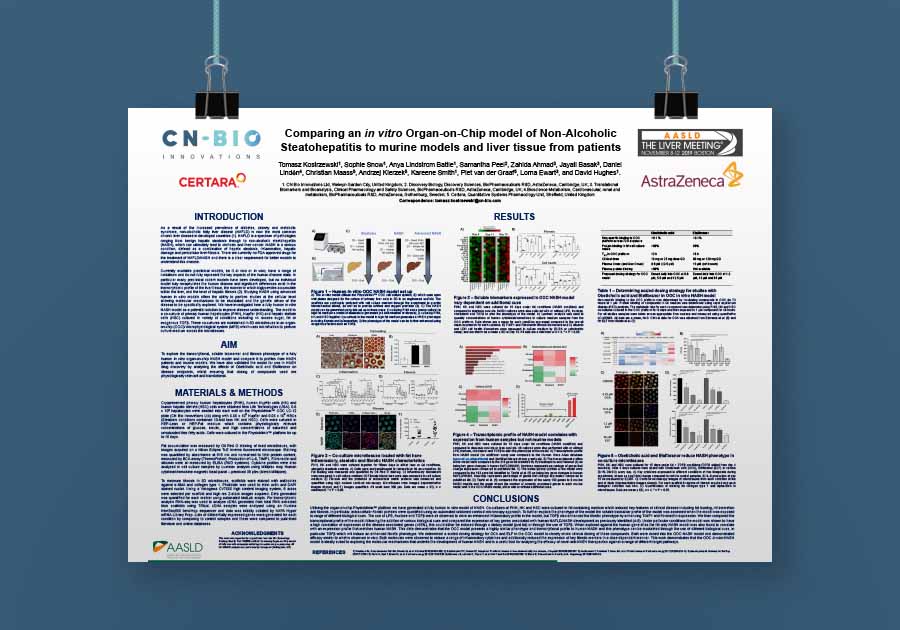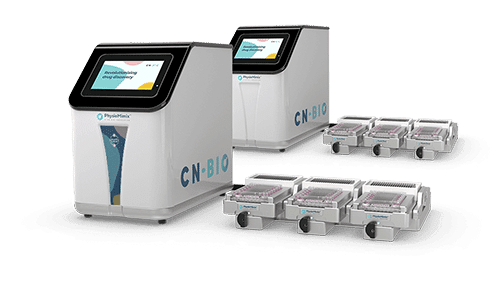Resource > Posters >
Comparing an in vitro Organ-on-Chip model of Non-Alcoholic Steatohepatitis to murine models and liver tissue from patients
American Association for the Study of Liver Diseases (AASLD)
Filed under: Disease modeling and NAFLD/NASH

Kostrzewski et al
As a result of the increased prevalence of diabetes, obesity, and metabolic syndrome, Non-Alcoholic Fatty Liver Disease (NAFLD) is now the most common chronic liver disease in developed countries. NAFLD is a spectrum of pathologies ranging from benign hepatic steatosis through to Non-Alcoholic Steatohepatitis (NASH), which can ultimately lead to cirrhosis and liver cancer. NASH is a serious condition, defined as a combination of hepatic steatosis, inflammation, hepatic damage, and pericellular liver fibrosis. There are currently no FDA-approved drugs for the treatment of NAFLD/NASH and there is a clear requirement for better models to understand this disease.
Currently available preclinical models, be it in vivo or in vitro, have a range of limitations and do not fully represent the key aspects of the human disease state. In particular, many preclinical rodent models have been developed, but no individual model fully recapitulates the human disease and significant differences exist in the transcriptomic profile of the liver tissue, the manner in which triglycerides accumulate within the liver, and the level of hepatic fibrosis. Studying NASH using advanced human in vitro models offers the ability to perform studies at the cellular level allowing molecular mechanisms to be elucidated and the genetic drives of the disease to be specifically explored. We have investigated here a fully human in vitro NASH model as a potential solution to improve disease understanding.

